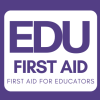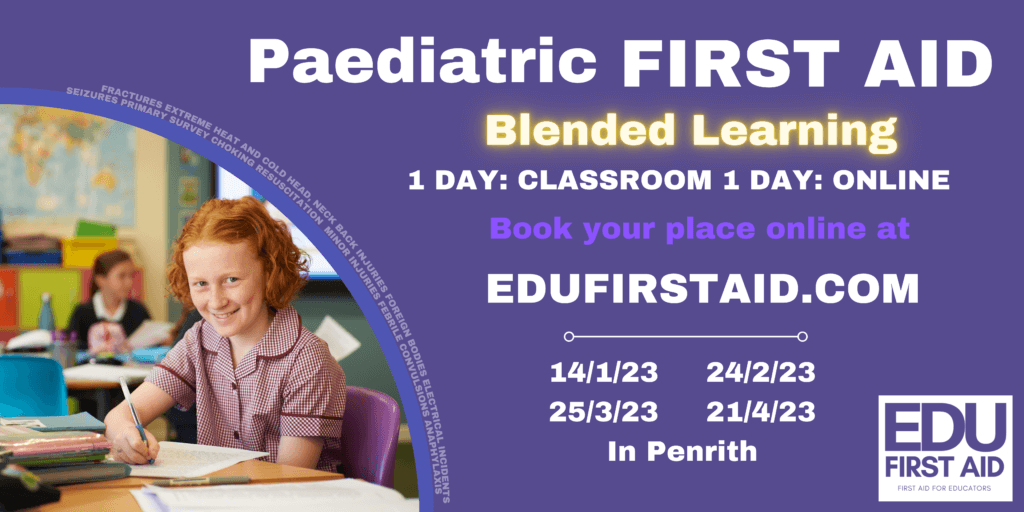You may be booked on to do a paediatric course and wondering what to expect, or you might be wondering what you need in your first aid kit – or even what do you absolutely need to remember when doing first aid…. Read on, and we’ll answer your most frequently asked questions.

1: What can I expect on a paediatric first aid course?
If you are on an open course (where you don’t know anyone else, rather than an in-house course, where it’s in your setting), the morning will start with everyone nervously shuffling their pens, ID (which you’ll usually need to provide), and sit there staring at the floor. Try instead to get to know the people next to you – these are likely to be your small group for the day. When the course starts, the instructor will outline the day, and then the learning begins. Don’t be afraid to ask daft questions. Don’t be too embarrassed to volunteer, and try to scribble notes down – it might help you to remember the important things. There will be lots of practical bits – like bandaging or doing CPR (most likely, you’ll partner up with those you talked to first thing), but there will also be chances to learn about ‘what to do if…’
2: What does ‘paediatric’ mean?
Paediatric courses are aimed at those who work with children under the age of 18, such as teachers, teaching assistants, lunchtime supervisors, as well as nannies and au pairs.
3: What is different from a normal first aid course?
Paediatric courses cover topics that happen to children (under 18s) more than to adults – for example, bumped heads, grazes and scrapes, but also the important stuff, like how to administer an epipen. Most adults who carry an epipen can do it themselves, but a child relies on their school teachers to care for them. That means you need to know what to do in an emergency. CPR is a little different for children than adults, so we focus on what to do for children, and for childhood illnesses and accidents.
4: What happens if it’s too upsetting, and I can’t do it?
We know that everyone comes to first aid courses with a suitcase full of stories, experiences and knowledge. We can’t know everyone’s story before they arrive, and so we tread carefully and sensitively through the course. That said, there might be discussions that might bring up memories or topics that cut a little too close to the bone (no pun intended). If that happens, we don’t mind if you step out, catch your breath, and come back as soon as you can. Feel free to chat with the trainer at breaktime if you need to.
5: What is the most important thing to remember about First Aid Courses?
This question gets asked a lot, and it’s like asking ‘what is the meaning of life?’ There are lots of answers, but if you remember DRS ABC, that will go a long way to keeping you and your pupils safe.
D – Danger (are you stepping into danger?)
R – Response (is your casualty able to respond to you?)
S – Shout for help (and get them to call 999)
A – Airway (is the airway clear and have you opened it by tilting the head back?)
B – Breathing (are they breathing? look, listen and feel for no more than 10 seconds)
C – CPR (if they are not breathing, start CPR)
6: What happens if I forget all my First Aid Training in an emergency?
It does feel like there’s so much to remember. Does it really matter if I pinch a bleeding nose for… (is it 10mins or 15?)… In the event of an emergency, you can only do your best, and each time you do a first aid course you build on your knowledge and your confidence grows. If I had a pound for every time someone has said ‘I had to use my first aid at the weekend! I thought of what you said, and I knew just what to do!’ The more you use your first aid, the quicker the knowledge will come flooding back. Keep practising! Remember, you can always refer to your book if it’s minor things like a sting, or you want to check the protocol for burns etc, or downlaod the Red Cross First Aid app for free. You can also do refresher courses annually. In a life threatening emergency, the person on the end of the phone willl remind you of what to do.
7: What should I have in my first aid kit?
The easiest thing to do is order a refill pack, throw away your out of date kit, and fill it with the new one. You need gloves, bandages, wound wipes, triangular bandage, plasters, safety pins, and eye wash. There are extra things like tough-cut scissors, or clinical waste bags, but a refill kit comes in sizes (small, medium, large) so, just order the one you feel your school or classroom needs.
After that, your nursery or school office might have a locked medicine cupboard with medication such as antihistamines, pain relief, savlon, anthisan. Whatever you stock, you need to ensure the child’s parents have consented to you giving it. Your school’s policy will state whether you must call the parents before administering, but whatever the protocol is, record keeping is paramount; therefore you may have your records in the locked cupboard too. You may have your emergency medication (inhalers, epipens) near the locked cupboard; whilst keeping it out of reach of children is important, it needs to be accessed very quickly, so locking it away is not a good idea.
8: I’m worried that I might be sued if I do it wrong, is that right?
The government passed a bill in 2015 to protect someone who does first aid from being pursued in the courts, if the first aider was:
- acting for the benefit of society, and/or
- demonstrating a predominantly responsible approach towards protecting the safety or interest of others, and/or
- acting heroically by intervening in an emergency to assist an individual


